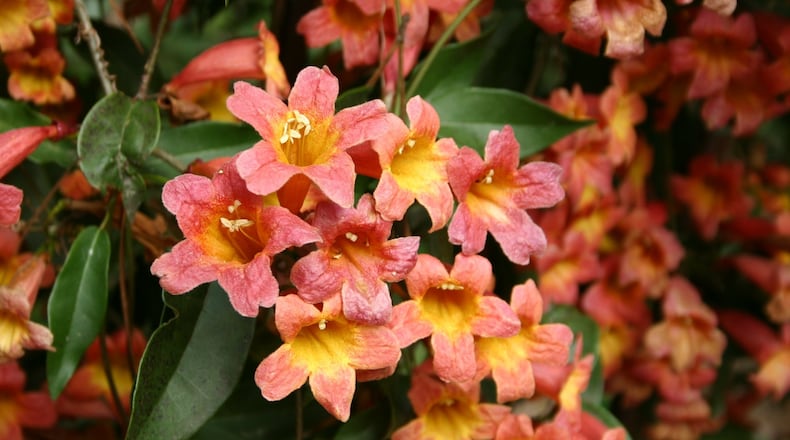Q: I have a pile of fresh logs in an inaccessible ravine on my property. However, it can be seen from the street. What vines do you recommend to cover this so it's not an eyesore? Randy Aronov, email
A: Four vines immediately come to mind. If you want flowers, crossvine, Bignonia capreolata, blooms in early April with gorgeous orange and yellow flowers. Carolina jessamine, Gelsemium sempervirens, blooms in March with bright yellow flowers. Evergreen clematis, Clematis armandii, has bright white flowers in late April. All are somewhat shade tolerant. If you'd rather not have flowers drawing the eyes of people driving by, regular English ivy would fit the bill. You will be responsible for keeping any vine you plant from climbing nearby trees.
Q: We setup a bluebird house in our rain garden. White-breasted nuthatches went in and out for a few days. Then the bluebirds showed up. Today the nuthatch is going in and out. Did the bluebirds just give up? Is this scenario normal? Rachel Cox, Winder
A: Nuthatches and bluebirds prefer similar size nests so they fight over any appropriate housing. Bluebirds are bigger than nuthatches so they usually win, but not always. Be sure your entrance hole is 1 1/2 inches in diameter; this is what bluebirds prefer. Nuthatches like a smaller opening of 1 inch wide. Whichever bird occupies your nest, know that you are contributing to needed ecological diversity in your landscape.
Q: My lawn guy said that my grass needs to be scalped to keep it "healthy". Underneath the dead grass there's a lot of black. My zoysia grass has been around for decades and it's very, very thick. Janet Dalgamouni, email
A: The black streaks are the spores of fungi that are decomposing dead zoysia thatch. The thatch layer is there because the lawn was not mowed often enough. In my experience zoysia needs to be mowed every five days. The grass clippings can decompose completely before the next mowing. If you mow every seven days, or longer, thatch will accumulate into the thick layer you see today. When your lawn is 50% green, you can mow and remove 1/2 inch of grass height. In five days, remove another one half-inch. Repeat until the grass is two inches high. Maintain this height throughout the summer. If you can aerate after a rain, when the soil is soft, the aerator soil plugs will help decompose the thatch even further.
Q: When a pine tree is cut down do the roots keep growing? George Carpenter, email
A: They do not. Without the sugar energy coming down from needles or leaves, tree roots don't have any way to elongate. In addition, plant hormones that direct root growth are unavailable as well.
About the Author
The Latest
Featured

